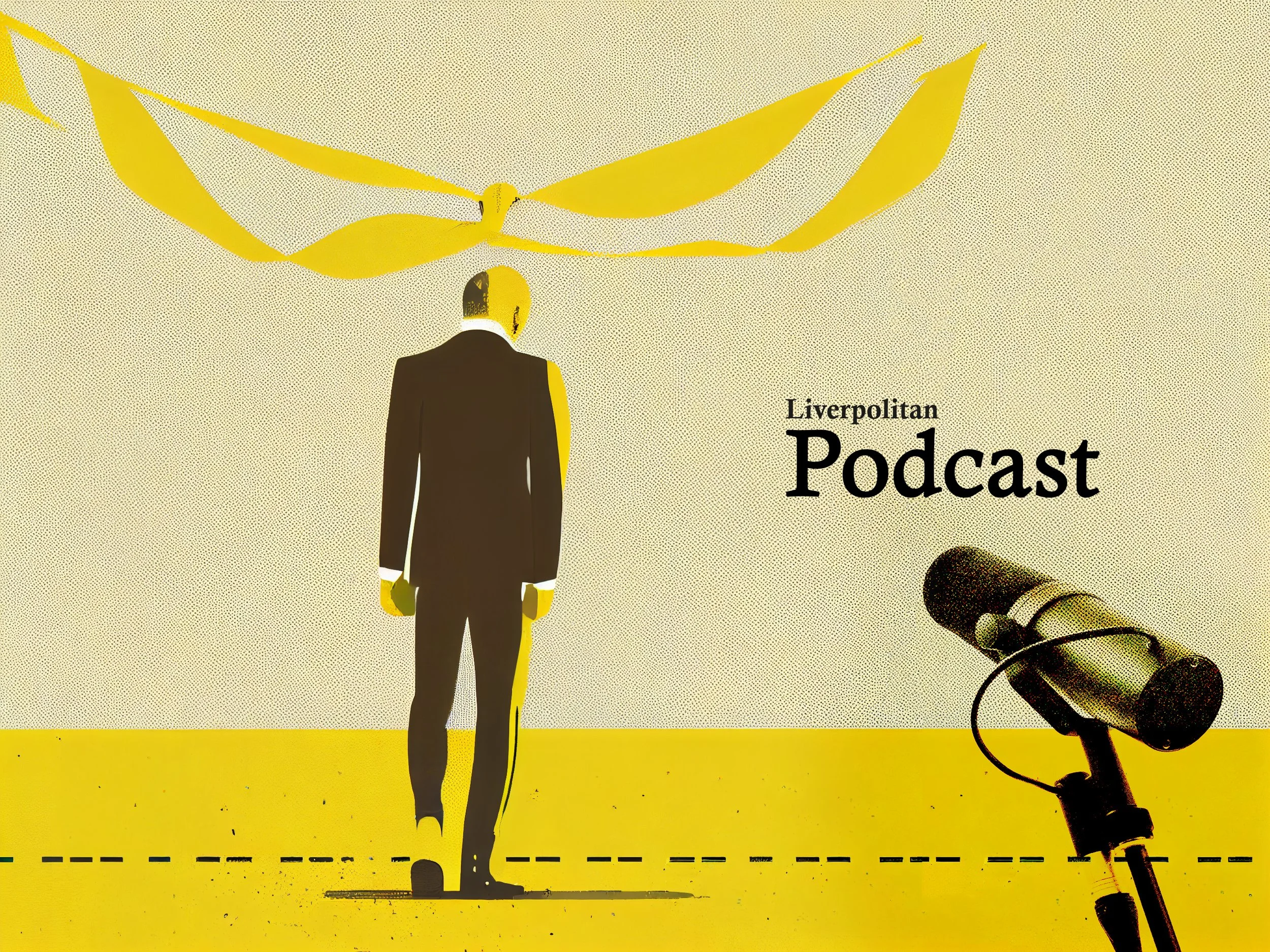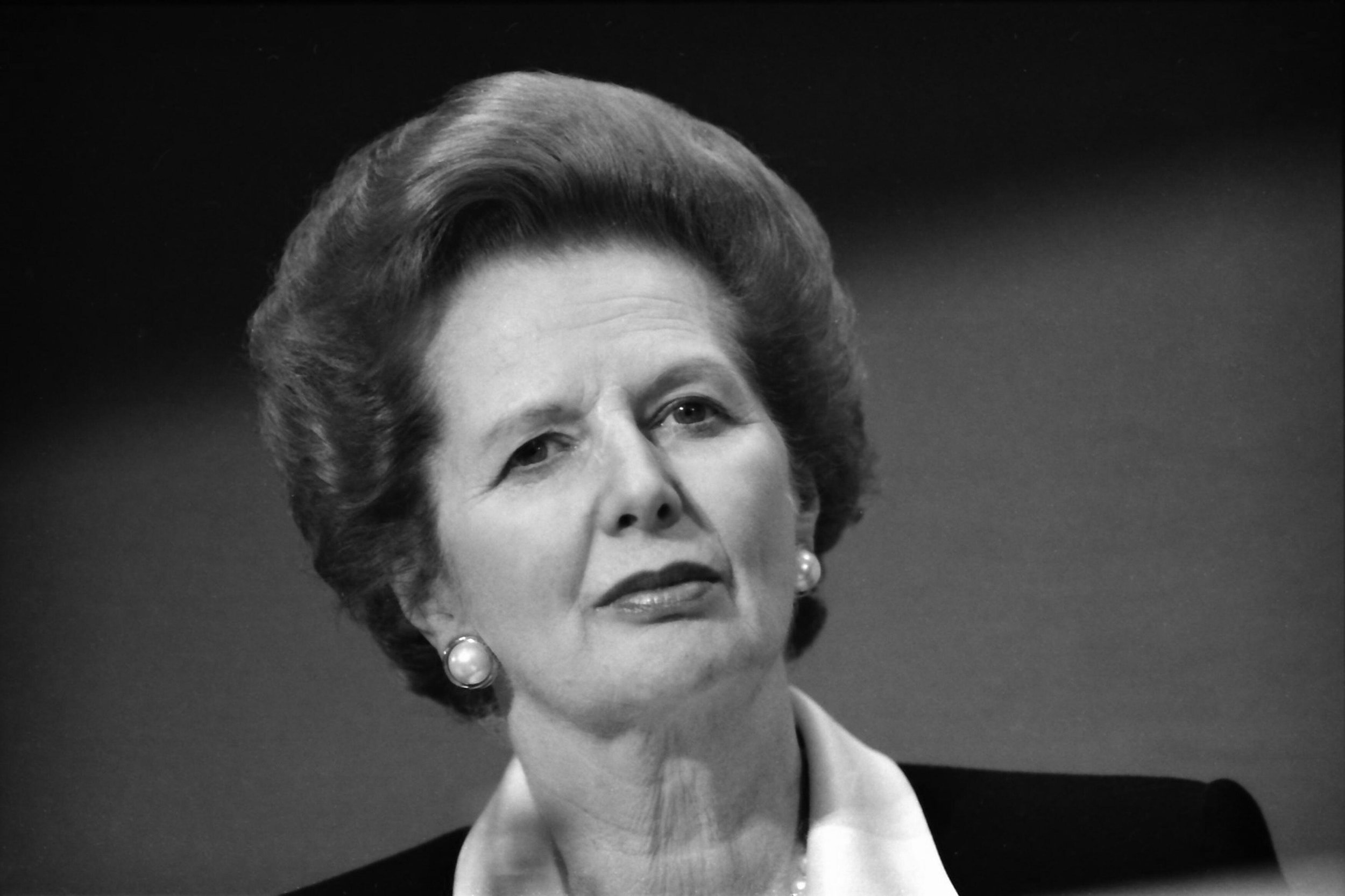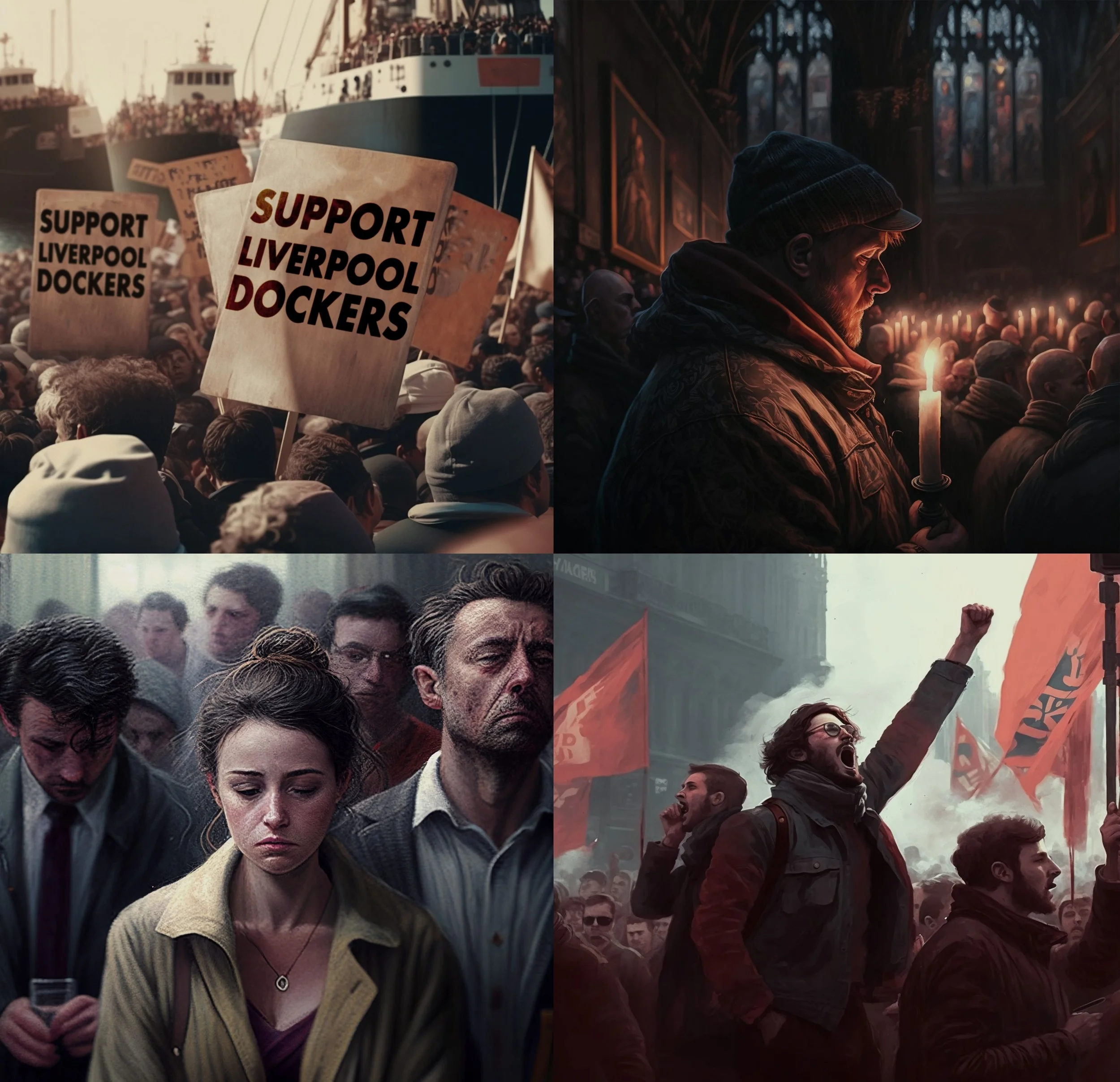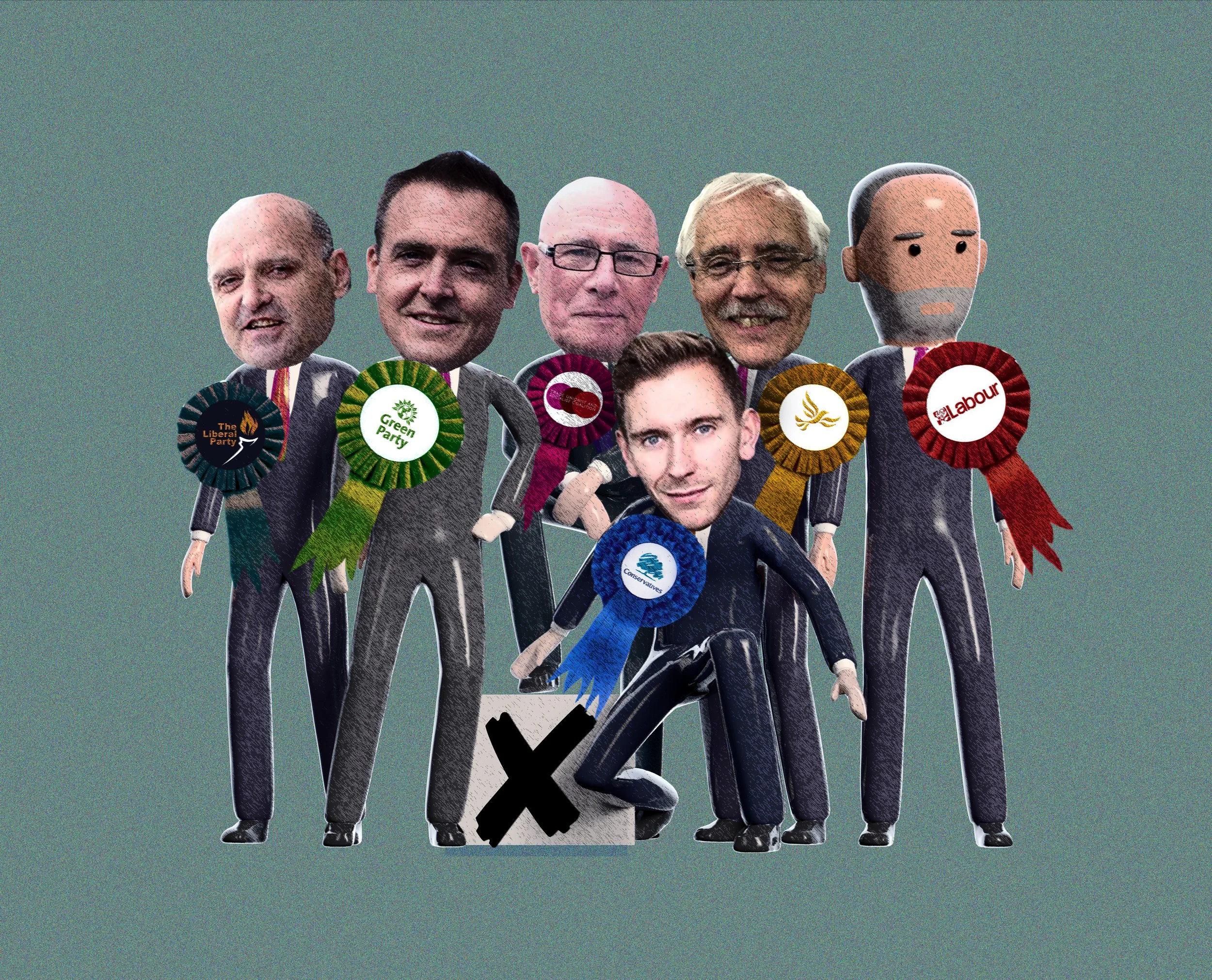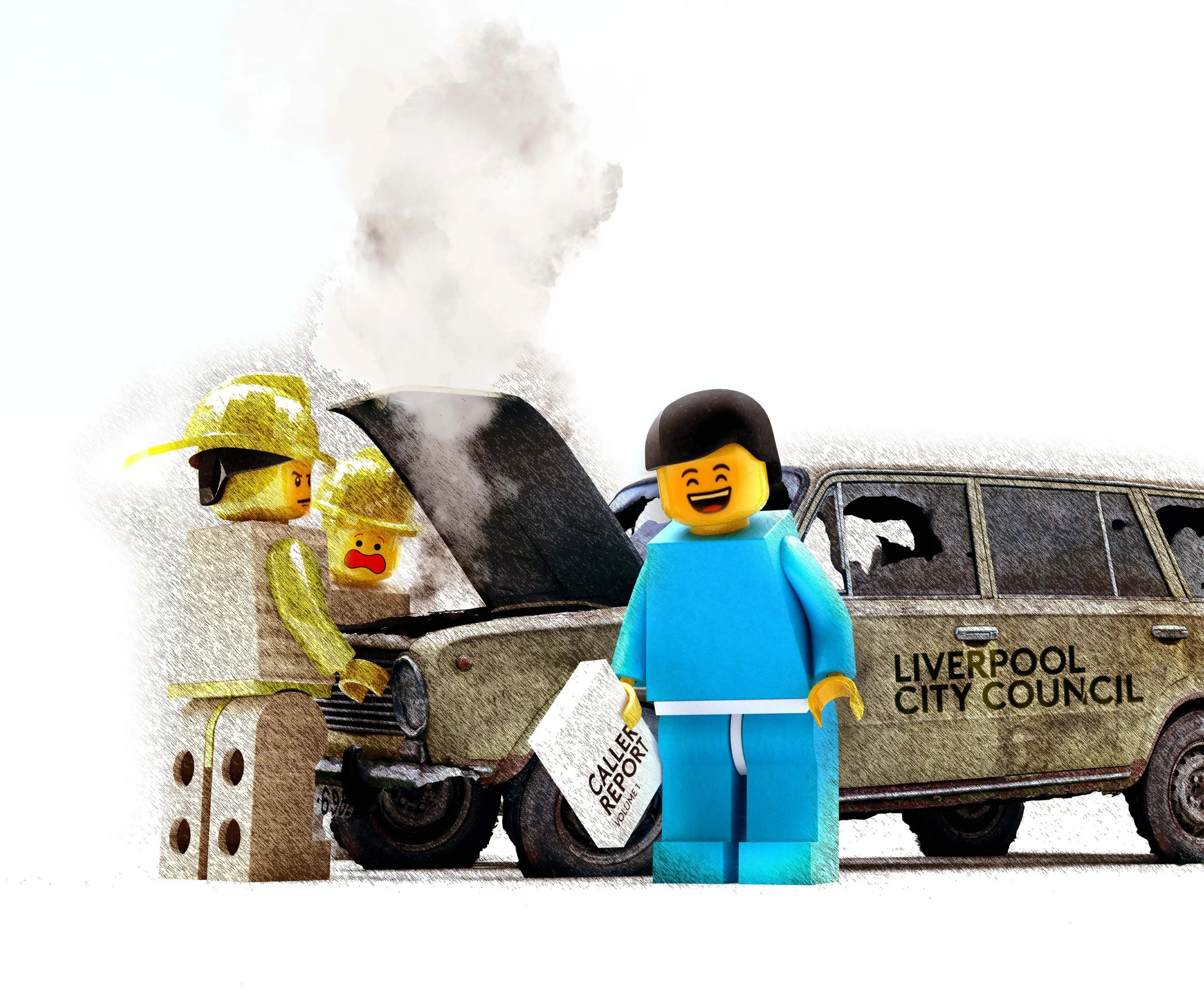Recent features
It’s Time to Get Interesting
“Manchester, hub of the industrial north” was the opening line of a 1970s TV advertisement for the Manchester Evening News. With a voice-over by the no-nonsense, northern character actor, Frank Windsor, and what looked like shaky Super 8 aerial footage of an anonymous northern cityscape, the advert spoke to Manchester’s deep sense of itself as the very acme of gritty, grimy northernness.
Jon Egan
“Manchester, hub of the industrial north” was the opening line of a 1970s TV advertisement for the Manchester Evening News. With a voice-over by the no-nonsense, northern character actor, Frank Windsor, and what looked like shaky Super 8 aerial footage of an anonymous northern cityscape, the advert spoke to the city’s deep sense of itself as the very acme of gritty, grimy northernness.
This long-forgotten televisual gem was brought to mind by a recent tweet from Liverpolitan which observed, sagely, that when Manchester Metro Mayor, Andy Burnham talks about ‘The North’, he is essentially delineating the outer boundaries of his own city’s expanding psychogeography. Under Burnham’s monarchic reign, Manchester has become the fulcrum of an aspiring northern nation. Its status as capital of the north is beyond dispute. Michael McDonough’s visionary prospectus for Liverpool’s Assembly District as a home for pan-northern regional government (beautiful and inspiring though it is) is destined to remain another sadly lamented ‘what if’. Liverpool’s own claims to northern dominance are a boat that has long since sailed and, like a great deal of our city’s historic wealth and prestige, are now securely moored at the other end of the Manchester Ship Canal.
Sorry if this sounds fatalistic and defeatist, but it’s an unavoidable truth. Manchester as regional capital has already happened and I can’t help feeling it’s actually entirely apposite. Liverpool is not, never has been and never will be the capital of the north for a very simple reason - we’re not in ‘the North.’
Let me explain. Some years ago when pitching for the brief that became the It’s Liverpool city branding campaign, my agency team and I presented an extract from a speech by then Tory Minister for Transport, Phillip Hammond. In it, he had been extolling the benefits of HS2, which he prophesied would unleash the potential of “our great northern cities.” To emphasise the point, and presumably to educate his London-centric media audience, he decided to identify these hazy and distant provincial relics that would soon benefit from an umbilical connection to London’s life-giving energy and dynamism. Manchester, Leeds, Birmingham, Sheffield, Bradford and even Newcastle (which wasn’t in any way connected to the proposed HS2 network) all made it on to his list. Our pitch focussed on Liverpool’s conspicuous absence from Hammond’s litany. We weren’t (as I opined in an earlier offering to this publication) ‘on the map’. We deduced that the speech was one more piece of definitive evidence that Liverpool wasn’t considered sufficiently great to merit a mention - nor important enough to be connected to a flagship piece of national infrastructure. But on reflection, there may have been another reason for the city’s omission. Perhaps we weren’t sufficiently northern! As if the inclusion of the offending syllables liv-er-pool would have somehow derailed this Lowryesque invocation of smoke stacks, cloth caps and matchstalk cats and dogs.
Of course, we are not talking about The North as a geographic region, or even an amalgam of richly diverse sub-regions, but as a mythic construct. However, as the French philosopher and founder of semiotics, Roland Barthes, would argue, myths are always distortions, albeit with powerful propensities to overcome and subvert reality. In this sense, northernness is not merely a point on the compass - It’s a complex abstraction, a constituent part of the English psyche and self-image that has strong connecting predicates and excluding characteristics. Geography alone is not enough to discern where The North begins and which enclaves and exclaves are to be considered intrinsic to its essential terroir. Isn’t Cheshire really a displaced Home County tragically detached from its kith and kin by some ancient geological trauma?
Thus when Government Ministers or London-based media commentators pronounce on "The North" they are all too often referencing a cloudy and amorphous abstraction defined not by lines on maps, but by indistinguishable accents, bleak moorlands and monochrome gloomy townscapes, nostalgically referred to as ‘great cities’. From this perspective, northerners are seen as honest, hardworking souls, who used to make things (when things were an important source of wealth and national prestige). Though stoical and resilient, they have a tendency, every generation or so, to get a bit bolshy, at which point it becomes necessary to reassure them of their place in our national life by relocating part of a prestigious institution to a randomly selected northern location, or by staging a second-tier sporting event such as the Commonwealth Games or perhaps even placating them with some vague commitment to ‘re-balancing’.
“When Manchester Metro Mayor, Andy Burnham talks about ‘The North’, he is essentially delineating the outer boundaries of Manchester’s expanding psychogeography.”
Manchester has been brilliantly adept at securing for itself more than its just share of these charitably dispensed national goodies. Largely that’s through a typically northern resourcefulness and pragmatism, but also because the city has ingeniously positioned itself as a shorthand synonym for the very idea of northernness.
Peter Saville CBE, the graphic designer who art-directed Factory Records and designed their most iconic album sleeves, also created the acclaimed Original Modern branding for Manchester in 2006. A predictably beautiful piece of graphic creation, it wove a vivid palette of cotton loom colours to represent a new Manchester, that was proud of its pioneering past but wanted to take that innovative DNA to recreate itself in the 21st century. It was wildly popular, but as an exercise in “re-branding” it didn’t succeed in challenging or reframing Manchester’s perceived identity. Instead, it merely set out to transmute it into something more contemporary and serviceable. Saville's project was to dig deeper into the Manchester’s vernacular version of mythic northernness, reflecting no doubt his immersion in Factory's overtly industrial aesthetic. It’s a restatement of core northern traits and a celebration of the city’s long-established narrative - the hub of the industrial north. Manchester’s sense of modernity was less about today and more an evocation of the 19th century, when it was considered the workshop of the world. Its originality was brilliantly expressed by the historian, Asa Briggs, who described it as the “Shock City of the age” - an urban phenomenon without peer or precedent in Europe and only matched by Chicago in North America. Cut forward to the early years of the Noughties. The opening of the ill-fated Urbis project – a new ‘Museum of the City’, conceived by Justin O’Connor and designed by Ian Simpson, was a bold assertion in shining glass and steel of Manchester’s boast to have been the world's first industrial city and the birthplace of the modern age. Despite the powerful statement of brand identity, it was a hopelessly unsuccessful attraction, closing after only two years in 2004. Its director candidly admitted that this monument to the city’s inventive and industrious spirit simply “didn’t work.”
Peter Saville’s Original Modern. Despite the fresh lick of paint, Manchester’s new branding campaign was curiously backward-looking.
In my article, Vanished. The city that disappeared from the map, I suggested that one radical option for Liverpool was to stop trying to compete with its eastern twin. Instead, I argued, we could become a new kind of urban entity - a city with two poles, which pooled our joint assets and balanced the two hemispheres of human consciousness to forge a global metropolis that could re-balance Britain without needing to turn to the patronising benevolence of London. Two hundred years after the building of the world’s first inter-city railway between Liverpool and Manchester, it seemed like a plausible and timely possibility to explore. I was wrong. Not because this idea is manifestly an anathema and heresy to every patriotic Liverpolitan (except me, it seems), but because Manchester is definitively and inexorably set on its own northern trajectory (even to the point where its most creative and happening urban district is aptly branded the Northern Quarter). Unlike Liverpool, Manchester's identity is embedded in its geography, and its literal place in the world. Its compass has only one co-ordinate and it isn’t west.
So where does that leave Liverpool? If we’re not part of The North, where in the world are we? Exiled and dislocated from our northern hinterland, we are a place apart; liminal and strangely detached from mundane geography. The recent media frenzy occasioned by the booing of the national anthem by Liverpool FC fans reignited a predictably shallow rehash of the “Scouse not English" debate, with the now familiar allusions to Margaret Thatcher’s alleged but never conclusively proven project to euthanize the city, compounded by the tragic injustice of Hillsborough. But these events were not the beginning of Liverpool's estrangement from its northern and English identity and its gradual drift to the edge of otherness. When in the second half of the 19th century our “accent exceedingly rare” began to emerge as something radically different to the dialects of neighbouring Lancashire, it was disparaged as “Liverpool Irish” - a vernacular that was deemed to be both alien and inherently seditious. As late as 1958, in Basil Dearden’s film Violent Playground - a British-take on the then topical theme of “juvenile delinquency” - the Liverpool street gang, led by a youthful David McCallum, are portrayed with accents that one reviewer of the DVD release, observed, “curiously owe more to the Liffey (Dublin's river) than the Mersey.” We were quite literally being depicted as foreigners in our own country.
Struggling to find a place within the recognised cartography of northernness, with a figure and stature too grandiose for the peripheral space allotted to us, where in the world can we find a comfortable and fruitful niche? The city that disappeared from the map has only one option - find a new map!
“Liverpool’s cultural programme is undoubtedly worthy, but how many people outside the city can name a single event, festival or programme that happens here?”
Let’s call it the map of interesting cities - places with an ingenuity and energy that is not defined by their geography, and whose confidence and chutzpah aren’t predicated on being the capital of anywhere or anything. Cities whose identity isn’t camouflaged or submerged into anything as nebulous as a region or a point on the compass. So let’s concentrate on being seriously interesting.
It’s a mantel that fits our self-image but we need more than the costume. It’s a project that demands a script and some serious acting. I genuinely think that Liverpool is an interesting city, it’s just that for too long we have marketed ourselves on the basis of our most boring and predictable traits.
We could take our cue from Austin, Texas, a city that markets itself with the slogan “Keep Austin Weird”. It based its civic renewal project on a determination “not to be Houston.” Austin’s promotion of independent business and cutting-edge creativity made it an early poster-child for Richard Florida’s boho-city thesis that diverse, tolerant and culturally cool metropolitan regions will exhibit higher levels of economic development. But Austin’s claim to be an interesting city pre-dates the self-conscious cultivation of weirdness as a kitsch merchandising gimmick. Austin devised and delivered what is now one of the world’s most prestigious gatherings of music, film and interactive media creatives at the annual SXSW festival. It’s an object lesson on how to make space for a genuinely international and seriously ambitious cultural proposition and use it to re-position and redefine a city.
Have we really built on the exposure of 2008 to deliver an internationally recognised programme of cultural events? For all the self-congratulatory posturing, Liverpool’s cultural programme is undoubtedly worthy, definitely diverse but how many people outside the city can name a single event, festival or programme that happens here? For all the energy and inventiveness invested in our pell mell of festive gatherings, we somehow manage to deliver a cultural calendar that is considerably less than the sum of its manifold parts. Places that use cultural events as the pivot for their positioning strategy generally do so by delivering one event or festival of genuine international scale and quality, as Edinburgh, Venice, Austin, San Remo, Cannes and Hay on Wye amongst others will testify. Similarly, “cultural cities” or UNESCO cities of music will normally look to validate that title with a programme that is commensurate with their claim or status.
I’m not going to predict or prescribe the event or theme that Liverpool needs to devise because there are bigger and better informed brains than mine who will be needed for that task. However, I do believe this city can build and sustain an international profile compatible with its brand and reputation by aiming higher and deploying its resources accordingly. For Austin, SWSX was not a travelling circus; it was an integral part of the city’s emergence from the shadows of Houston and Dallas to find its own profile and authentic magnetism. (For more information on Austin’s struggle to maintain its cultural identity try Weird City by Joshua Long).
Being interesting is a vocation. It demands creativity as well as rigorous discipline and hard work. It inevitably requires a style and quality of leadership that is absent from our dismal and discredited local politics. It’s ironic that the one aspect of our civic life that is without question unique and interesting, is so for all the wrong reasons. Liverpool's politics never fails to entertain, shock, frustrate and confound - if only it could achieve and deliver. In the 19th century, Liverpool not only spearheaded ground-breaking projects in rail, building technology and maritime engineering, we were also a wellspring for innovations in public policy and governance. Through pioneering initiatives like the introduction of the district nursing service and public washhouses, and the appointment of the world's first medical officer of public health, Liverpool's civic leaders responded to unprecedented challenges with entirely original structures and solutions. At a time when so many of the established prescriptions and paradigms are breaking down, we need to be plugged into the people and places that are responding creatively to challenges like climate change, technology & the future of work, life-long learning, democratic engagement or the next global pandemic.
Being interesting has to be a behavioural norm that finds expression across every sector and constituency. Are our politics interesting or innovative? Is our media intelligent and stimulating? Are we nurturing our most inventive businesses? Are we doing anything original or brave to address our challenges in education, housing or transport? How do we hope to stem the migration of talent, potential and ingenuity as too many of our best and brightest conclude that this city simply doesn't offer them a future? How do we emulate cities like Austin and become a magnet for innovators and entrepreneurs rather than a departure lounge?
Being interesting is fundamentally about being interested and connected to the wider world! It’s about being aware of what’s happening outside the insular and constricting straight-jacket of scouse exceptionalism or parochial northernness. It’s being open to outside influences and ideas and forging connections and relationships with kindred cities. Maybe we could become the convenor of the interesting city network - a global family of midsize cities free from the gravitational drag of conformity and contingent geography? Cities like Portland, Rotterdam, Hamburg, Auckland and Vancouver whose commitments to liveability and sustainability has sparked inventiveness in transport, urban planning, smart technology and the cultural industries.
If there is a common trait or attitude that connects these cities it is that they are porous, with a capacity and willingness to absorb ideas, influences and people from outside and beyond. Their thinking and ambition is not stunted by a perspective that is either provincial or parochial. They have a place in the world defined more by attitude and outlook than their position on the map. More often than not, they are ports and portals for cultural and human exchange. Auckland and Vancouver have flourished as a direct consequence of immigration, welcoming industrious and ambitious migrants from South Asia and East Asia. Despite our boast to be the World in One City, Liverpool is one of the least demographically diverse cities in the UK. Having at last stemmed our population decline, we are still growing at a discernibly slower rate than comparable cities like Leeds and Manchester. So let's grow our population by becoming an overtly immigrant friendly city, and proactively targeting one potential migrant population with whom we already have an historic and cultural affinity. Doesn't it make sense for the home of Europe's oldest Chinatown to be promoting itself as a welcoming haven for Hong Kong residents fearful of mainland China's increasingly despotic designs on the former colony? "Hungry outsiders wanting to be insiders" was a phrase coined by West Berlin in the 1980s as a strategy to reverse demographic and economic stagnation. It's an approach that a city built for twice its current population could usefully emulate.
Our new narrative can be built on familiar and cherished aspects of (or at least claims about) Liverpool's core identity - open, welcoming and global. But it's time to live them rather than simply intoning them as glib marketing slogans and nostalgic musings. Brands are about behaviour; their truth and utility is measured by what you do, not by what you say, so let's be consistently and ambitiously global not provincial.
In the same way that we need to rethink and curate our cultural programme to be genuinely international in terms of reach and quality, we should be enlisting global talent and expertise to help us rethink and reshape our city. Rather than flogging off prime sites like Liverpool Waters and the Festival Garden to whichever developer or volume house builder is offering the biggest buck, let's hold an international design competition to deliver the most innovative and sustainable new waterfront communities. Twenty years ago, Liverpool Vision was able to excite architects of the calibre of Richard Rogers, Rem Koolhaas, Will Alsop and Norman Foster in opportunities at Mann Island and King's Waterfront. It's a tragic shame that none of their inspired visions came to fruition, but let's resolve to try harder and be clear and consistent about who we are and how we intend to renew and reposition our city.
It's tempting to imagine that being the Capital of the North will transform our destiny in a way that being European Capital of Culture failed to do. But it's not about titles. It’s about a fundamental change in disposition, attitude and culture - and finding a way to overcome the inertia and mediocrity that emanates from our moribund and discredited civic governance.
Above all, it’s about remembering that once upon a time we were the first world city - our compass is omni-directional.
Jon Egan is a former electoral strategist for the Labour Party and has worked as a public affairs and policy consultant in Liverpool for over 30 years. He helped design the communication strategy for Liverpool’s Capital of Culture bid and advised the city on its post-2008 marketing strategy. He is an associate researcher with think tank, ResPublica.
Share this article
What do you think? Let us know.
Write a letter for our Short Reads section, join the debate via Twitter or Facebook or just drop us a line at team@liverpolitan.co.uk
Turning the lights back on
When Covid first struck, nobody could have predicted the catastrophe it would inflict on the cultural sector worldwide. What was thought to have been little more than a rather large blip similar to the annual appearance of a new strain of influenza turned into something way more serious, closing down massive sectors of the economy and driving many to the brink of oblivion. For the cultural sector, the outlook was dire. Museums, galleries, libraries, theatres, concert halls, music venues and leisure centres all closed. The Creative Industries Federation cited research that more than 400,000 UK jobs could be lost in 2020, with the nation’s creative industries losing £1.5bn a week in revenue. However, as signs of conquering Covid become bit by bit more evident, the culture industry is slowly reopening in Liverpool and its environs. But how different will it be?
Glyn Mon Hughes
When Covid first struck, nobody could have predicted the catastrophe it would inflict on the cultural sector worldwide.
What was thought to have been little more than a rather large blip similar to the annual appearance of a new strain of influenza turned into something way more serious, closing down massive sectors of the economy and driving many to the brink of oblivion. For the cultural sector, the outlook was dire. Museums, galleries, libraries, theatres, concert halls, music venues and leisure centres all closed. The Creative Industries Federation cited research that more than 400,000 UK jobs could be lost in 2020, with the nation’s creative industries losing £1.5bn a week in revenue.
However, as signs of conquering Covid become bit by bit more evident, the culture industry is slowly reopening in Liverpool and its environs. But how different will it be?
Liverpool, after all, is an internationally recognised ‘brand’ and many of its cultural offerings are globally recognised. Names such as Tate Liverpool, the Royal Liverpool Philharmonic, The Beatles, the Walker Art Gallery and dozens more are up there with cultural icons from cities on five continents. Things will, no doubt, change particularly when most restrictions are eased from 19 July. One of the many questions which remains unanswered, though, is whether people will come back to venues in the numbers who attended before March last year.
In March this year, a five-year plan was revealed to help rebuild the sector. The grandly named Liverpool City Region Cultural Compact Strategic Action Plan says it ‘recognises the key role that arts and culture play in the city’s economy and in supporting health and wellbeing as the City Region emerges from the pandemic’. It talked about the ability of recognising the evidence of the impact of the crisis, seen in the closure of venues and 3,500 redundancies in the first six months of the crisis. It added that ‘closure of music, entertainment and performing arts venues had a catastrophic effect on other parts of the supply chain, including production services, catering and travel companies, whose social and economic impact is immense’.
So, where next?
Prior to the pandemic, according to Culture Liverpool 57,000 people worked in the City Region’s cultural sector (or in associated jobs) – double the number estimated by the Office for National Statistics. Many of these jobs are unseen by both residents and visitors. They are the people who curate exhibitions in art galleries, who write the descriptive information on museum exhibits, who light the theatre, who collate and put out the music for orchestral musicians, who run the publicity machines to get people to the venues in the first place. That’s before all those who serve in theatre bars, museum coffee shops, art gallery shops and all the other support staff.
But many of those jobs have gone. Getting them back may be more of an uphill struggle than many realise.
The five-year plan has put three key strategies into place to ease the way along the path to recovery. Creative Communities will champion community-led transformation and develop assets within communities across the City Region. Creative People will support and facilitate artist-, practitioner- and community-led cultural and creative interventions with the City Region cultural programmes, while Creative Place will prioritise the influence and role of arts and culture and regeneration of the City Region.
The seriousness of the situation was revealed when National Museums Liverpool set up an appeal in order to avoid losing jobs. Donations from the public dropped 95%, since all seven venues attracted 200,000 visitors in 2020. The normal footfall tops 3m.
“We usually get £400,000 a year through donation boxes so you can see how devastating that is,” said Head of Development Rowena Dean. Towards the end of the year, around 100 jobs came under threat as the Museums’ total income fell by about £5.9m. There was funding from Government but that does not cover everything, with Dean revealing that, for every £1 which comes in grants, 45p needs to be raised locally – from shops, cafes and donations. “Even while we have not had visitors in the building, the work still goes on. We’ve still been feeding the fish, caring for the collections, planning exhibitions, looking after those buildings. So a huge amount has been going on.”
Theatres and music venues have been closed and, now that many may reopen again, audiences must be socially distanced. That means a concert by the Royal Liverpool Philharmonic Orchestra can be attended by 300 people in the hall – which is about a sixth of the venue’s capacity. Liverpool Cathedral can accommodate only 200 in the vast central space – whether for a service or for a performance of some kind.
The Philharmonic, however, attracted national media attention for its innovative online offer. Concert-goers who could not attend the live event could pay £10 and watch a recording of the event as many times as they wished within 30 days. That helped the venue recoup some of the millions it lost in non-existent box office revenue - £2.5m, as reported in the Daily Telegraph in June 2020. That figure has surely rocketed since then. Social distancing not only restricts audience numbers but also the amount of musicians allowed on stage – a maximum of 35 at present.
Any choir – unless professional – cannot perform at present, so large organisations such as the Royal Liverpool Philharmonic Choir or the Liverpool Welsh Choral are silenced. That has led members from the thousands of other choral outfits nationwide to take to a frantic social media debate asking why singing is seen as highly dangerous, yet shouting or cheering at a sports event is perfectly acceptable. In all, something like 2m singers have been silenced nationwide since March 2020 as rehearsals and performances for all but a very limited group are banned.
The seriousness of the situation was revealed when National Museums Liverpool set up an appeal in order to avoid losing jobs. Donations from the public dropped 95%…
According to a worried yet optimistic chief executive of the Phil, speaking to the Daily Telegraph a year ago, there are fears for the future. “The hope is that we come through this not only successfully, but strengthened,” said Michael Eakin, “because one of the things that gives me hope is that I can see that people can see the value of this when it’s not around.”
Liverpool’s music scene is, of course, far more than the Philharmonic. The M&S Bank Arena has seen its programmes decimated as have places such as the O2 Academy and the various Liverpool venues it manages, such as the Guild of Students or the Arts Club. The myriad other venues which make up what could be described as Liverpool’s gig economy have had to rein their respective programmes which means that it is not only large theatres with labour-intensive touring productions which have been affected but also everything else, right down to the folk duo playing in a street-corner pub who have seen their livelihoods virtually terminated.
The same goes for theatres and cinemas. The Playhouse can admit 150 patrons – normally 680 – while the Everyman sells 72 seats for each performance, instead of 405. Groups of cinemagoers must keep apart which, in turn, affects revenue. How all this will change after 19 July remains to be seen and plans so far appear sketchy.
Even outdoor events, such as the giant artworks planted around the city, part of Liverpool Biennial – the UK’s largest festival of contemporary art – came a cropper. Thousands of people turned up to see the installations which immediately attracted criticism because of a lack of social distancing. These were, of course, people venturing out for some sort of entertainment often for the first time in months, so they could hardly be blamed.
All is far from lost, though, and there are positive signs for the future. The Shakespeare North Playhouse opens in Prescot in summer 2022. The new 400-seat Tung Auditorium, in the Yoko Ono Lennon Centre on Grove Street, opens later this year and will become the home of the Philharmonic’s contemporary music outfit, Ensemble 10/10. The Liverpool Theatre Festival will go ahead in September. A new chamber music festival has been set up in Wirral, and takes place this month. Add those – and many other events – into an incredibly vibrant cultural offering, and it is possible to take some comfort from the herculanean efforts made to keep the arts afloat.
Independent research commissioned by the Visitor Economy Team at Liverpool City Region Local Enterprise Partnership in 2018 showed that 67.3m people visited the region – 61m just for the day, and 5.5m as staying visitors. The economic value of the visitor economy had grown 5% per year for five years and stood at just under £5bn pumped into the local economy. Somewhat ominously, Peter Sandman, Head of Visitor Economy for the LEP spoke of underlying concerns which could hamper growth in the next five years. “In 2018, Liverpool slipped from fifth to sixth place in terms of popularity with overseas visitors,” he said. “Similarly, the reliance on domestic markets to sustain this level of performance while the implications on border controls as the UK leaves the EU for key inbound markets may also affect performance.”
That view must, surely, be radically different now. Quite how the City Region rebuilds its cultural offer remains to be seen. Tentative steps are being made on the footpath back to normality for the formidable culture offering in Liverpool City Region. But how are we going to countenance the new normal?













